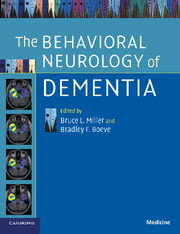Book contents
- Frontmatter
- Contents
- List of contributors
- Section 1 Introduction
- Section 2 Cognitive impairment, not demented
- 12 Cerebrovascular contributions to amnestic mild cognitive impairment
- 13 Mild cognitive impairment
- 14 Mild cognitive impairment subgroups
- 15 Early clinical features of the parkinsonian-related dementias
- 16 Dementia treatment
- 17 Dementia and cognition in the oldest-old
- Section 3 Slowly progressive dementias
- Section 4 Rapidly progressive dementias
- Index
- References
12 - Cerebrovascular contributions to amnestic mild cognitive impairment
Published online by Cambridge University Press: 31 July 2009
- Frontmatter
- Contents
- List of contributors
- Section 1 Introduction
- Section 2 Cognitive impairment, not demented
- 12 Cerebrovascular contributions to amnestic mild cognitive impairment
- 13 Mild cognitive impairment
- 14 Mild cognitive impairment subgroups
- 15 Early clinical features of the parkinsonian-related dementias
- 16 Dementia treatment
- 17 Dementia and cognition in the oldest-old
- Section 3 Slowly progressive dementias
- Section 4 Rapidly progressive dementias
- Index
- References
Summary
Introduction
Advancing age is often accompanied by complaints of impaired memory and reduced performance on a variety of cognitive tasks, particularly tasks that measure memory. Careful cross-sectional examination of cognitive function among community-dwelling elderly, however, reveals a spectrum of cognitive performance from normal to dementia, including impairments in a variety of cognitive domains in the absence of a clinically defined dementia. Gradual decline in cognitive ability is a characteristic of longitudinal studies of the elderly, consistent with the aging and mental decline hypothesis, but with substantial individual heterogeneity that suggests much of the age-related differences in memory performance may reflect an admixture of incipient dementia within older populations. The possibility that incipient dementia is prevalent amongst the elderly is further supported by neuropathological studies that reveal evidence of Alzheimer's disease (AD) years before clinical symptoms are evident. Although less common, AD pathology can also be found in individuals with no detectable symptoms. Finally, AD pathology is often present in individuals with memory impairment who are not demented. Clinical studies of elderly individuals with memory impairment also reveal a rapid rate of conversion to AD, reaching as high as 15% per year. This evidence suggests that significant memory impairment, short of dementia and often denoted as mild cognitive impairment (MCI) in the elderly may be a transition phase between the normal aging process and AD.
The concept of MCI has been repeatedly revised since its original description in the 1980s in recognition of the heterogeneity of this syndrome.
- Type
- Chapter
- Information
- The Behavioral Neurology of Dementia , pp. 161 - 171Publisher: Cambridge University PressPrint publication year: 2009



